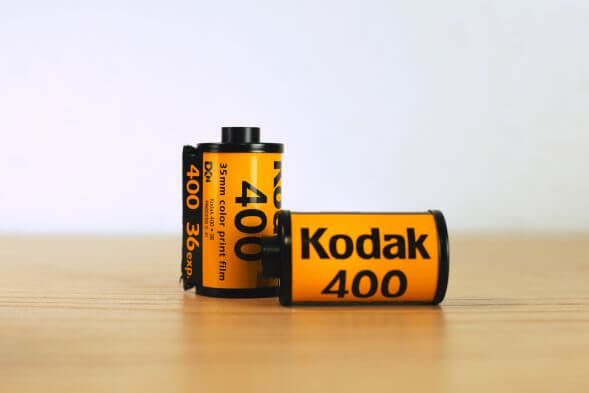Kodak, the photography giant for more than 100 years – was once a leading company that recorded the moment of every life for millions of people. At its height, Kodak controlled photographic film industry with a 90% US market share and an 85% global market share. However, the company that pioneered the photography industry failed to adapt to the digital revolution, leading to its eventual downfall.
In this article will dive deep into the Kodak collapse, why it happened and what it means for businesses to take a lesson today. Kodak’s story is a powerful lesson in the fact that complacency and resistance to change can bankrupt even the most successful companies.
Also Read: The Rise and Fall of Toys “R” Us: How an Iconic Retailer Crumbled
The Early Days of Kodak: A Pioneer in Photography

Kodak was founded in 1888 by George Eastman, an innovator who aimed to make photography accessible to the masses. Eastman developed a revolutionary roll film system that made it easier for everyday people to take photographs, replacing the cumbersome glass plates that were previously used.
The slogan, “You press the button, we do the rest,” represented Kodak’s focus on simplicity and creativity. Kodak continued to dominate the market for years, producing great products such as the Kodak Brownie camera that was affordable and simple to use. Kodak, with its portfolio of products, was by the mid-20th century firmly entrenched as a pioneer in photography and sold to the professional photographers as well as the casual consumers.
Kodak’s rise to success was marked by innovation, marketing genius, and a strong brand presence. But as technology evolved, the company faced new challenges that it was ill-prepared to meet.
Kodak’s Missed Opportunities and the Rise of Digital Photography
The one thing that Kodak did wrong that cost it its reputation was that it failed to embrace digital photography. But ironically, Kodak produced the world’s first digital camera in 1975, designed by one of its own engineers, Steve Sasson. But instead of enlisting in this breakthrough, Kodak refused to disclose it for fear that digital would swallow its enormously profitable film business.
Kodak’s hesitation to embrace digital photography was more than a minor oversight – it was a strategic disaster that would eventually cost the company its market share. Kodak continued to concentrate on film, competitors such as Sony and Canon went all-in with digital to entice a new generation of photographers who were turning their backs on the silver screen.
Why Did Kodak Fail to Adapt?
The reason is that the company has become overdependent on its film business. Kodak executives feared that a digital revolution would devour the film unit that had been the company’s core business for decades. At the time, Kodak was earning large profits from selling photographic film, paper, and chemicals. The company was hesitant to disrupt this highly profitable business model.
Rather than embracing the future, Kodak chose to protect its film business and ignored the growing demand for digital technology. This decision proved to be a costly mistake.
The Rise of Competitors: Kodak’s Market Erosion
Kodak retained control of the film business, but competitors were now advancing digital technologies. Japanese manufacturers such as Sony, Fujifilm, and Canon rolled out digital cameras immediately and took control of the market. These were brands willing to respond to changing consumer preferences and invest in the future of photography.
By the early 2000s, cameras were replaced by digital cameras, and film supply collapsed. Digital cameras attracted people with their speed, storage capacity for hundreds of images, and the immediate availability of pictures. Kodak, however, was caught behind.
In a last-ditch effort to catch up, Kodak released its own digital camera product line in 2001. But by this point, the company had been losing most of its market share to its competitors. Despite their success, Kodak’s digital cameras could not redeem the company from its steep decline.
Leadership Failures and Poor Strategic Decisions
Kodak’s lapse in digital photographic capability was accompanied by poor management and strategy mistakes. Daniel A. Carp, the founder of Kodak, took over the company in the early 2000s but did not lead it into a future that is digitally viable. The leadership at Kodak – rather than fully embracing the digital revolution – tried to maintain a balance between the film business and the new digital market. This approach was half-hearted and lacked the aggressive strategy needed to compete in a rapidly evolving industry.
Apart from failing to catch up with the digital revolution, Kodak made some questionable business decisions. One of these was the purchase of the photo-sharing website Ofoto in 2001. Rather than using the platform to compete with emerging social media and digital platforms, Kodak was effectively using Ofoto to encourage people to print their digital photos, a strategy that was short-sighted given the declining demand for printed photographs.
Meanwhile, other firms such as Facebook, Flickr and Instagram popped up, giving people the ability to publish and save their digital photos indefinitely, with no print out required. Kodak had not taken the next step to benefit from the digital revolution.
The Shift to Smartphones: Another Missed Opportunity
After the invention of digital cameras, another technological innovation began to emerge, the smartphone. Smartphones, especially iPhone and Android, had the benefit of excellent digital cameras and you no longer needed a separate camera in your daily life.
Kodak never had the chance to collaborate with phone manufacturers or innovate its own in this space. Then smartphones took over as the photographer’s preferred device and Kodak’s status in the photography world continued to diminish. Competitors companies such as Apple and Samsung were doing great in this new mobile photography fad, and Kodak failed to establish a presence in the digital ecosystem.
Kodak Files for Bankruptcy
Even as it tried to rebound, Kodak never quite managed to make it back on the ground in a market that was changing at rapid speed. In 2012, Kodak went bankrupt in Chapter 11, ending its days as a photography giant. The company sold most of its patents and assets to survive, but Kodak was no longer a dominant photographic company.
Kodak declared bankruptcy in 2013 but was no longer the company it once was. It had moved to digital printing and packaging, far removed from its long-time position as the world’s market leader in consumer photography. Kodak remains around today, but it no longer holds the prominence it once did.
Lessons from Kodak’s Failure
The failure of Kodak is a classic example of how even industry leaders can falter if they fail to adapt to changing market conditions. There are several important lessons that businesses can learn from Kodak’s story:
1. Embrace Innovation Early
Kodak invented the digital camera but was too concerned with maintaining its current film business to embrace this innovation. Businesses must be willing to disrupt themselves and embrace new innovations, even if it is at the expense of their existing products.
2. Adapt to Consumer Preferences
Consumer preferences evolve, and businesses that do not keep up with these changes will fall behind. Kodak had turned its back on this expanding market for digital photos and its competitors took advantage to deliver what consumers wanted.
3. Don’t Let Short-Term Gains Undermine Long-Term Success
Kodak’s decision to prioritize short-term profitability over long-term sustainability cost the company dearly. Businesses must be willing to sacrifice short-term gains to invest in the future.
4. Leadership Matters
Strong leadership is crucial during times of technological change. Kodak’s leadership failed to make the tough decisions needed to adapt to a digital future. A clear vision and bold decision-making are necessary to navigate disruptive changes in any industry.
Also Read: The Rise and Fall of MySpace: How the Social Media Pioneer Lost Its Way
Could Kodak Have Survived?
Now the question remains: would Kodak have been able to continue its current path? According to many experts, if Kodak had adopted digital photography in full when it was invented, the company would have held market dominance. Kodak, using its own brand equity and resources, could dominate digital photography. But its lack of creativity and a desire to defend its traditional business model killed it.
Conclusion: Kodak’s Legacy
Kodak’s failure has become an eloquent reminder that no organization, however powerful, is immune from technological change. The photography mogul was destroyed through all sorts of mistakes, such as its refusal to embrace digital technology, its bad business plans, and its poor management.
While Kodak may have fallen from grace, its story serves as a cautionary tale for companies across all industries. In the age of fast technologies, companies must innovate constantly to remain in demand. As Kodak’s legacy should be an illustration, success is never a certainty, and survival in a high-tech world is a matter of adaptation.



